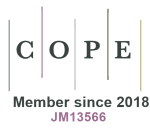Philosophical state in a dialysis treatment patient
DOI:
https://doi.org/10.33393/gcnd.2020.990Keywords:
Existentialism, Narrative, Philosophy, PsychologyAbstract
The following study is original respect to the scientific panorama in fact, through a literature review that uses a qualitative metasynthesis method and follows the aggregative or meta-aggregative approach of the Joanna Briggs Institute, it returns to the reader 3 main results: the Anguish for an imminent death, the relationship with the body, sexuality, pain and dimension of the person, and the Perception of time and existentialism. Reflecting on the “philosophical state or philosophy of the patient in dialysis treatment” through these 3 macro-themes means investigating in depth the words of the patients, extrapolating their feelings, fears and worries, so as to understand their overall view of life and illness even in the most veiled aspects. Finally, the reflection will be used to direct the care of professionals towards a real and meaningful appointment of the dialysis patient. All thanks to the philosophy that goes beyond the methodology of research and evaluation of data, through the interpretation, direction and demonstration of the concept of limit, as an intrinsic part of man, disease and science. (Humanization)
References
- The Joanna Briggs Institute. Joanna Briggs Institute Reviewers’ Manual. Adelaide: JBI. 2014.
- Ricoeur P. Interpretation Theory: Discourse and the Surplus of Meaning. Forth Worth: Christian University Press. 1976.
- Cesarino GB, Casagrande LDR. Paciente com insuficiência renal crônica em tratamento hemodialítico: atividade educativa do enfermeiro. Revista latino-americana de enfermagem. 1998;6(4):31-40.
- Martinetti P. Saggi e discorsi. Torino: Paravia. 1926.
- Cervantes L, Jones J, Zoucha J, Fischer S. Experiences and Values of Latinos with End Stage Renal Disease: A Systematic Review of Qualitative Studies. Nephrol Nurs J. 2016;43(6):479-93.
- Calvin AO, Engebretson JC, Sardual SA. Understanding of advance care planning by family members of persons undergoing hemodialysis. West J Nurs Res. 2014;36(10):1357-73.
- Ivie JM. Developing an in-house resource for clinical social work services in the dialysis setting: a pilot program. Adv Chronic Kidney Dis. 2006;13(3):295-306.
- Tijerina MS. Mexican American women’s adherence to hemodialysis treatment: a social constructivist perspective. Soc Work. 2009;54(3):232-42.
- Axelsson L, Randers I, Jacobson SH, Klang B. Living with haemodialysis when nearing end of life. Scand J Caring Sci. 2012;26(1):45-52.
- Ruggiu L. Fisica, Aristotele. Milano: Mimesis. 2017.
- Alici L. La città di Dio, Sant’Agostino. Milano: Bompiani. 2001.
- Santos PR, Capote JR Jr, Cavalcanti JU, et al. Quality of life among women with sexual dysfunction undergoing hemodialysis: a cross-sectional observational study. Health Qual Life Outcomes. 2012;10:103.
- Freud S. Opere. Vol. 4: Tre saggi sulla teoria sessuale e altri scritti (1900-1905). Torino: Bollati Boringhieri. 1905.
- McQuoid J, Jowsey T, Talaulikar G. Contextualising renal patient routines: Everyday space-time contexts, health service access, and wellbeing. Soc Sci Med. 2017;183:142-50.
- Paci E. Esistenzialismo e Storicismo. Milano: Mondadori. 1950.
- Giuliani L, Ghilardi G. La percezione del tempo nei pazienti di cure palliative: una revisione della letteratura. Metodologia Didattica e Innovazione Clinica. 2014;22(1):66-70.
- Giuliani L. La cura nel tempo, Tempus fugit. Milano: Mimesis. 2018.











